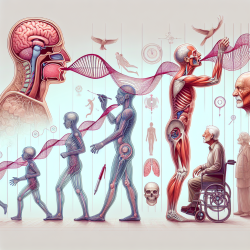Introduction
Suicide remains a pressing global health challenge, with a significant proportion of cases occurring in low-resource settings (LRS). The Engaged Community Action for Preventing Suicide (ECAPS) model, as explored in the research article "The engaged community action for preventing suicide (ECAPS) model in Latin America: development of the ¡PEDIR! program," offers a culturally relevant framework to address this issue effectively.
The ECAPS Model: A Community-Centric Approach
The ECAPS model focuses on a community-based participatory approach, empowering local communities to identify and address the social determinants of suicide risk. This model emphasizes the importance of local expertise and leadership, fostering a sense of ownership and sustainability in suicide prevention efforts.
Implementing the ¡PEDIR! Program
The ¡PEDIR! Program, developed through the ECAPS model, comprises two key components: provider training and educational development. The program aims to equip mental health providers with the skills to engage, assess, and intervene with at-risk individuals effectively. The training modules cover crucial areas such as:
- Understanding youth development factors related to suicide risk.
- Enhancing self-awareness regarding attitudes towards suicide.
- Conducting comprehensive suicide risk assessments.
- Implementing evidence-based intervention strategies.
Challenges and Opportunities
Implementing the ECAPS model and the ¡PEDIR! Program in low-resource settings presents unique challenges, including limited mental health infrastructure and cultural barriers. However, the model's adaptability and focus on community engagement provide a promising pathway to overcome these challenges and improve suicide prevention efforts.
Encouraging Further Research and Implementation
Practitioners are encouraged to explore the ECAPS model further and consider its application in their communities. By leveraging local resources and fostering cross-cultural partnerships, the ECAPS model can significantly enhance suicide prevention efforts in low-resource settings.
To read the original research paper, please follow this link: The engaged community action for preventing suicide (ECAPS) model in Latin America: development of the ¡PEDIR! program.










